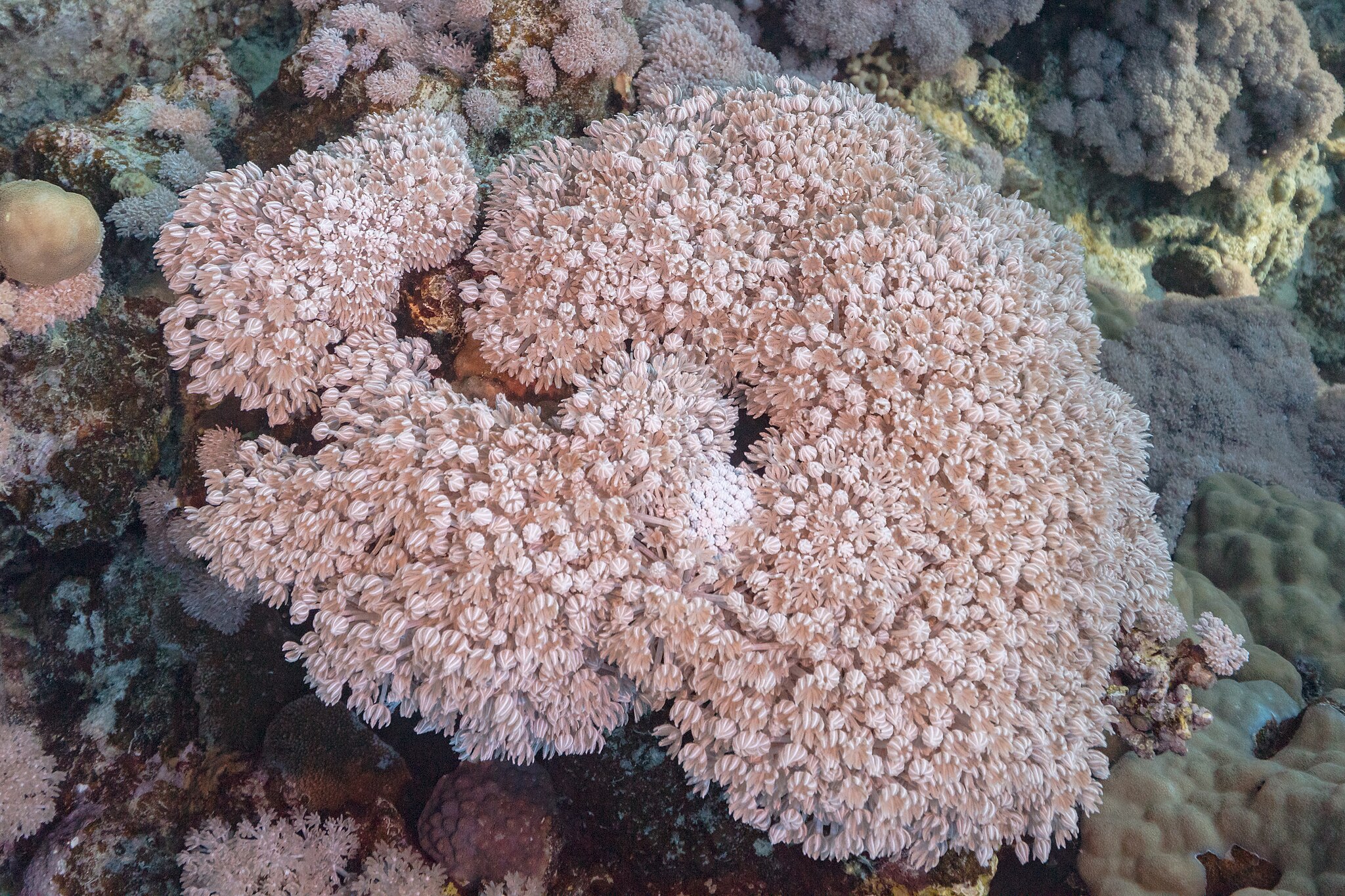Invasive species are plants and animals that arrive in a new habitat where they have no natural predators, and compete with the native flora and fauna, causing damage and sometimes destroying the native plants and animals. In the United States as a whole, an estimated 137 billion dollars in damage can be chalked up to the influence of invasive species every year. Puerto Rico in particular faces problems with feral swine, rats, and the rock pigeon. Now, add a new threat to the list: Xenia umbellata, an invasive coral.
What’s the problem?
Xenia umbellata is native to the Red Sea. It tolerates higher temperatures than the native corals, and it grows over and smothers native corals. Climate change threatens coral reefs without the introduction of invasive species, since the higher temperatures, increased acidity in water, and greater exposure to ultraviolet rays all stress native corals. The invasive species is not as strongly affected by these factors, so it has a competitive advantage.
The introduction of invasive corals can disrupt the intricate web of relationships within the reef ecosystem. Many reef fish rely on specific types of coral for food and shelter. If invasive corals take over, these fish populations can decline, which affects the populations that feed on these species as well. In coral reefs off of Venezuela, where similar invasive corals have established themselves, the level of biodiversity in the reefs is severely diminished.
The consequences of invasive coral extend beyond the immediate disruption of the ecosystem. Healthy coral reefs are vital for coastal protection, absorbing wave energy and buffering shorelines from storms. The decline of coral reefs due to invasive species leaves these coastlines vulnerable to erosion and natural disasters.
What’s the solution?
In some cases, invasive corals have been removed or killed. Puerto Rico has declared an emergency and plans to implement an emergency response strategy.
However, the most effective approach lies in prevention. Stricter regulations on ballast water discharge from ships can help minimize the accidental introduction of invasive species. Educating tourists and divers about the dangers of disturbing coral reefs can also play a vital role. Corals can spread when small pieces of the coral are caught in a swimmer’s hair or swimsuit, for example, and are carried to another area. Sometimes invasive corals are released from a hobbyist owner’s aquarium or taken as a souvenir by a diver. Increased awareness can make a difference.
Early identification and response to invasive species is of paramount importance. Lack of resources may make it difficult to meet the challenge. Analyses of federal budgets show that more funds are devoted to established communities of invasive species than to new ones. In addition, according to the Government Accountability Office, “A major obstacle to rapid response is the lack of a national system to address invasive species.”
The same report points out that invasive species that threaten agriculture and livestock are often the focus of federal efforts to handle invasive species. “Currently,” they note, “federal rapid response depends largely on whether invasive species are central to an agency’s mission.” With 20 different agencies making some effort to deal with these environmental problems, we hope that at least one is paying attention to Puerto Rico.








No responses yet